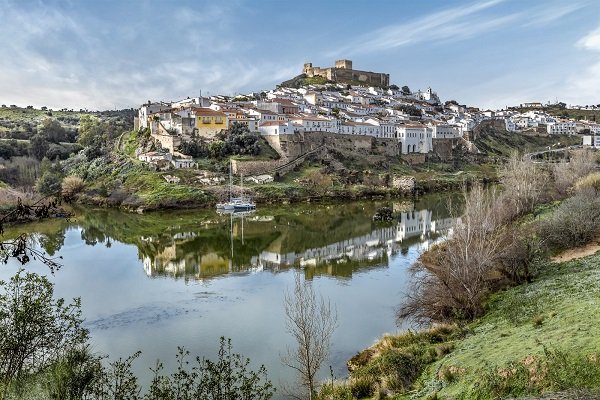Portugal was born in the darkness of war, the Reconquista to be specific. A young prince of a small county saw his chance to carve a nation from the chaos of the 12th century – and using guile and persistence, he pushed hard into the Moorish lands to his south.
But war was nothing new to the land now known as the Alentejo. It has seen invaders from Celt nations, Greece, Carthage and North Africans Moors.
Certainly, there were long periods of peace and bright prosperity during the Pax Romana, and the Portuguese Renaissance.
But, given the plains and sun of the Alentejo, it also made an easy route for Spanish and French invaders - so fortifications, forts and castles were not only common, they were integral in defending the region and its long border. First there were ancient walled towns, then came Roman walled garrison towns, followed by fortified Moorish strongholds, and then centuries of defensive castles, not built as palaces for lords, but for the defense of a young Portugal, and the road to Lisbon.
Today these ancient relics are not only fun to explore – they often have wide views, and a unique perspective over the Alentejo.
The Lines of the Tejo
The Tejo River not only forms the Northern edge of the Alentejo but also gives the province its name. The lines of the Tejo River were set up to defend a young Portugal from the advanced and well armed Moorish lands to the south of the river in the 12th century. A line of impressive castles still guards the lovely flowing river, and they start at Montalvão.
Montalvão
In the 12th century the village of Montalvão was re-fortified due to its key position on the border with Castile and the Moorish lands to the south.
The Knights Templar built and defended the castle, and today its simple ruined walls still embrace the village witha long run of parapets, without any towers, and accessible by a single gate,a humble start of the mighty lines of the Tejo.
Belver
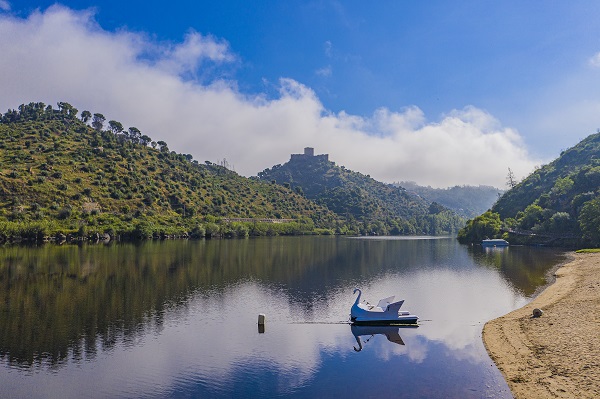

King D. Sancho I had the Knights of St. John of the Hospital to build a castle on a hill overlooking the Tejo at Belver in 1194. In 1350 the Order of Crato took on the castle defense. Belver castle served as a base for attacks to the south, its high walls and impressive keep, deterring unwanted assaults. Today it still dominates a high hill on the green and yellow banks of the Tejo, with a pretty village as its backdrop. The preserved walls still offer impressive views of the Tejo, and an idea as to how Belver got its name: Belver means Lovely to view.
A simple square castle, flanked by four towers. Amieira is unique. No other Portuguese castle shares the same design, and none rises so low on the banks of a river. The castle was rebuilt in the 14th century by Álvaro Gonçalves Pereira, a knight-turned-monk and father of the legendary Nuno Álvares Pereira. The order of the Hospitallers built this imposing castle between 1350-1360, as a defensive fort. Amieira do Tejo castle is sophisticated for early Gothic military design, with its regular, geometric plan, four towers on each corner. The well-preserved main tower offers a great view, still holding the banks of the Tejo.
Almourol
Almourol castle floats on a tiny islet in the River Tejo, rising like a dream over the calm waters. It was never attacked, and today is one of the purest 12th century castles in terms of retaining its original design. Even before the arrival of the Romans, a fort defended the islet. In 1171 Master Gualdim Pais and his fellow Templars were given the task to build a new castle to solidify the lines of the Tejo. The result was an imposing castle that looked like a stone ship.
With the defeat of the Moors in 1249, Almourol lost its military value, and was left to the river and the wind. But, sitting on an islet, vandals, stone thieves, and invading armies all left the castle in peace, and it has survived intact to the present. The castle’s plan is simple; a high wall on either side and one wall in the middle flank of the high keep. A series of small round towers defend the walls, and a double castellated wall juts out like a prow to the east. A small boat carries the visitors to the castle and its enchanted isle that remains a place of legends.
Santarém
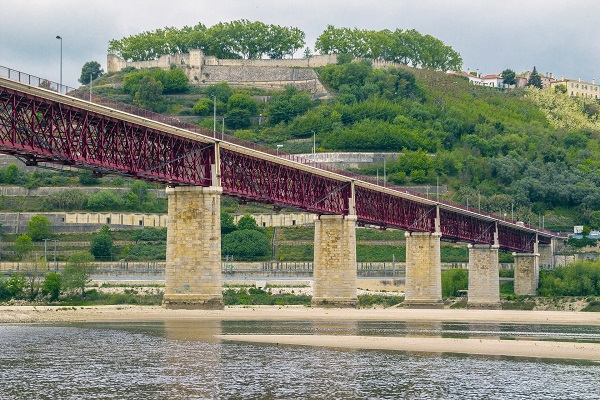

High on a hill, Santarém’s stone fortifications date back millennia. The Romans called it Scalabi Castro. The first king of Portugal seized the town in 1147 with a surprise assault at night. New conflicts would come in the 14th century with the strengthening of the defenses. In the crisis of the late 14th century, Queen Leonor Teles took refuge here and waited for support from the Spanish in an attempt to merge the nations. Today, the remains of the castle house a lovely park called the Portas do Sol (Gates of the Sun) with a statue of king D. Afonso Henriques. There are massive views from the walls at Portas do Sol out over the plains and the Tejo River Valley below.
A Raia
A Raia is the borderlands of the Eastern Alentejo with Spain, and it runs from the São Mamede Mountains to the Guadiana River Valley to the Atlantic. The Northeast of the Alentejo is heavily fortified with a string of castles and forts made to discourage unwanted visitors.
Fortresses and castles in the region include:
Flor da Rosa, Crato, Alter do Chão, Alegrete, Arronches,
Estremoz, Borba, Vila Viçosa, Portalegre, Fronteira, Evora, Evoramonte, Alandroal, Monforte, Terna, Portel, Vidigueira, Moura, Serpa, Juromenha and Beja
Marvão
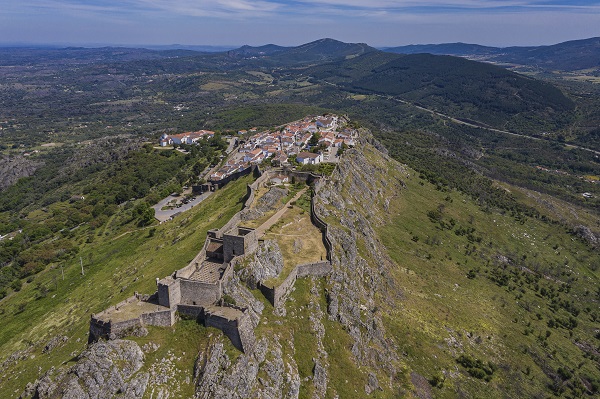

The soaring castle of Marvão in the village of Santa Maria de Marvão is a few miles from Spain. Marvão is still a place of meeting: here you meet people such as Celts, Vettones, Lusitanian Romans, Suevi, Vandals, Visigoths, Moors, Templars and Portuguese (and on occasion, Castilians). Today, Spanish visitors are common here and in the pretty fortified town of Castelo de Vide, down the road.
Marvão is a walled 'eagle's nest' - set high on a granite mountaintop, and bordered to the south and west by the Sever River. It was rebuilt by a young Portuguese nation in 1299 to discourage invasions. The village’s coat of arms prominently features a set of keys, as a result. The intact walls and castle still feel invincible and floating. There are huge views that go on for miles on a clear day, commanding views across the Tejo River Valley to the Serra de Estrela to the north. Marvão with just a few hundred inhabitants is the key to the borderlands, and retains its official title of ‘Mui Nobre e Sempre Leal Vila de Marvão' (Very Noble and Ever-Loyal Town).
Elvas
"Elvas, with Badajoz in sight," is an old saying about this Alentejo border city. Walled Elvas still guards the road to Lisbon. But, the bright city was heavily refortified between the 17th to the 19th centuries to offer the largest bulwarked dry ditch system in the world. Within Elvas’ massive walls, are a host of barracks and other military buildings as well as churches and monasteries. The city had always been walled, but the War of Restoration brought new forts. The site also offers the Amoreira aqueduct, built to withstand lengthy sieges.
Today, Elvas boasts a dozen small forts. The walls’ dry moat defensive system is considered a masterpiece that World Heritage described as "an outstanding demonstration of Portugal’s desire for land and autonomy, and the universal aspirations of European nation States in the 16th-17th centuries.” The historic city has lots of great places to stay. The main plazas offer shops and places to eat, as well as miles of walls to climb and explore.
Monsaraz
Monsaraz
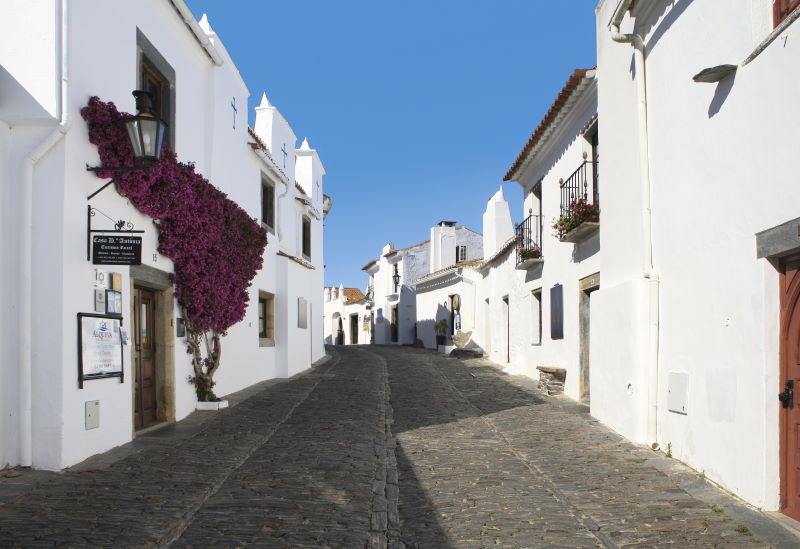

Walled Monsaraz has been a fortified settlement since prehistoric times. It held a strong military value as a hilltop that still dominates a valley, set with views over the Guadiana River and the frontier with Spain. The town was taken from the Muslims by Geraldo Sem Pavor (Geraldo the Fearless), in 1167. By 1232 King Sancho II had made it Portuguese, with the help of the Knights Templar
Today, Monsaraz is an open-air museum – set on a hill, and in its ancient walls - overlooking the Alqueva Lake, largest human-made lake in Europe, (and the fortified town of Mourão on the other side of the lake.) The light warms the whitewashed homes and cobblestone streets. Exploring Monsaraz is like traveling back in time. And there is much to see and experience in this charming place.
Mértola
Mértola has always welcomed the visitor with its heritage and breathtaking natural setting, set high on a hill. Above the Guadiana River facing Spain, Mértola was once Myrtillis Romana in the days of the Romans. The Romans fell to barbarians in the 4th century, and in the 8th century North African Moors brought a new period of prosperity. In 1238 Portuguese king Dom Sancho II took the town and handed it over to the Order of St. James. By 1300 new fortifications had risen. The walls remained in constant reconstruction with Spain just across the river. Today, Mértola is an archaeological treat, with excavations on the remains from the town’s many rulers of the past 3,000 years. Inside its walls, thrives a quaint town, rich in simple houses, disregarded cannons, and lots of flowers. The vast cistern and castle keep are survivors of the town’s bellicose past. It also has the only still-standing Moorish mosque in Portugal. The square mosque, now a church, is a unique example of the lost riches of Arab Portugal.
